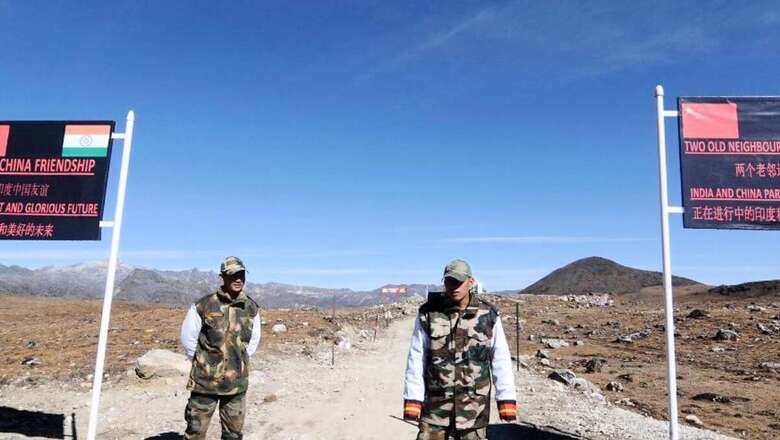
views
In the recent event of the India-China conflict, China has unitarily renamed 11 places of Arunachal Pradesh inside the Indian territory. This is the most recent attempt by China to continue its conflict with India without any provocation from the Indian side. For the last few years, China has continued to threaten or break international law between India-China contested borders. A recent publication from China has renamed 11 places along the map that shows them to be part of Arunachal Pradesh but claimed to be a part of the Southern Tibetan region. Out of these 11 places, one town, which is close to Itanagar, the capital city of Arunachal Pradesh, is also renamed. Chinese Ministry of Civil Affairs announced this decision on Sunday, April 2, 2023.
This is China’s third attempt to rename the places of Arunachal Pradesh since 2017. In its first attempt, China’s Ministry of Civil Affairs put out a list of six places inside Arunachal Pradesh. Lastly, in 2021, it again renamed 15 places of Arunachal Pradesh as a standard geographical name. The notification dated April 2 (No. 548) said, “According to the relevant provisions of the State Council on the management of geographical names, [China’s Ministry of Civil Affairs], together with relevant departments, has standardised some geographical names in southern Tibet. The third batch of supplementary place names for public use in southern Tibet (11 in total) is now officially announced.”
The 11 places named include five mountain peaks, two more populated areas, two land areas, and two rivers. Such an act goes against the sovereignty over territory which is the founding principle of international legal order and forms the basis for the implementation of the sovereign rights of a State as there seems to be greater recognition of the challenge from China and the need to recalibrate the Indian response.
In this light, there arise questions regarding the significance of such an arbitrary step under International law, the history of the India-China relationship, the recent standoff in 2020, and the possible way forward.
As China and India are both members of the United Nations. and China being a permanent member of the United Nations Security Council, it becomes important for China to not interfere with the political affairs of the other state as laid down under Article 2 (7) of the UN Charter. In this regard, the International Court of Justice (ICJ) in the Nicaragua case has said that the principle of non-intervention is both an obligation under treaty law and customary international law. If any of the parties violates the UN principle, they can be held responsible under international law. Thus, the unitary action of China to change the name of certain regions of Arunachal Pradesh is a clear example of a violation of the principle of non-intervention. By renaming these regions, China has directly interfered with the political affairs of India. These actions not only violate international law but also destabilise the peace in Asia. As the actual control of the area is with India, therefore, these actions of China are a futile exercise of powers.
Historically, many issues have divided the two countries such as India’s largely sympathetic attitude towards Tibet and hosting of the Dalai Lama; the Cold War geopolitical realignments; China’s efforts to challenge India’s primacy in South Asia; and China’s patronage of many ethnic-separatist groups operating in Northeast India, etc. What needs to be understood is the background in which China’s current attitude of expansionism has developed. It was in the early 1970s when China was in the middle of the Cultural Revolution, which even the Chinese themselves describe as a massive, destructive era. The root cause is the devastation resulting from the opium wars in the 1840s to World War II in the 1940s when China was under the control of the Western powers.
In recent times, the stand-off at Doklam was one of the most serious confrontations between India and China since the 1962 War. It was an outcome of India’s refusal to be bowed down by China’s growing assertiveness. The Doklam plateau is a disputed patch of land near the tri-junction of Bhutan, Tibet, and Sikkim. At the same time, India is treaty-bound to help address Bhutan’s security concerns as per the terms of a pact renewed in 2007 between the two countries, consequently, India sent its troops to the disputed area, preventing China’s attempts to seize physical control of the same.
Going forward, the need of the hour is for China to revisit the five principles of peaceful co-existence under the Panchsheel Agreement that it had signed with India on April 29, 1954, and enunciated the principles of mutual respect for each other’s territorial integrity and sovereignty; non-aggression; non-interference; equality and mutual benefit; and peaceful coexistence.
Abhinav Mehrotra is Assistant Professor and Dr. Biswanath Gupta is Associate Professor at OP Jindal Global University. The views expressed in this article are those of the authors and do not represent the stand of this publication.
Read all the Latest Opinions here




















Comments
0 comment